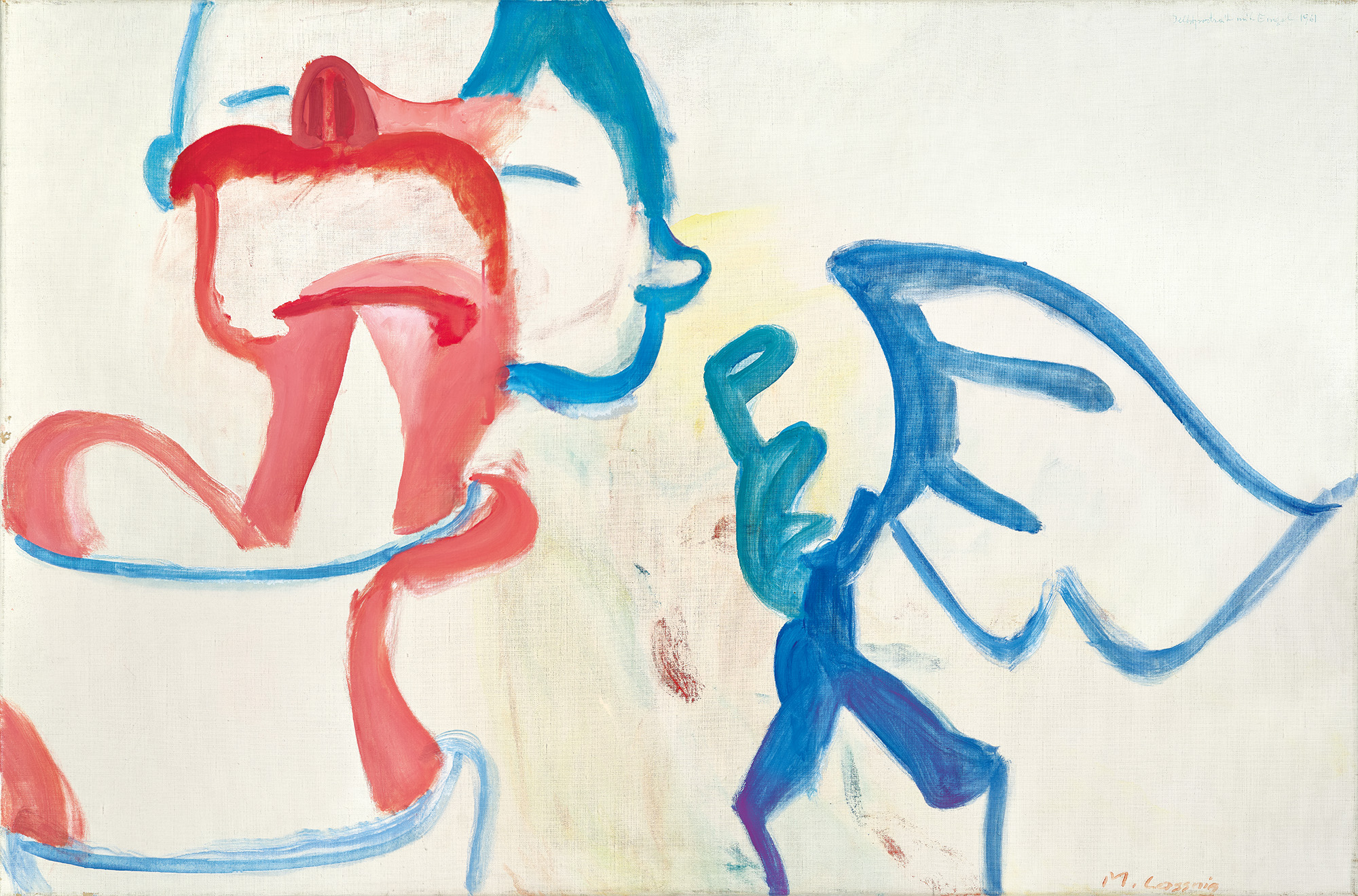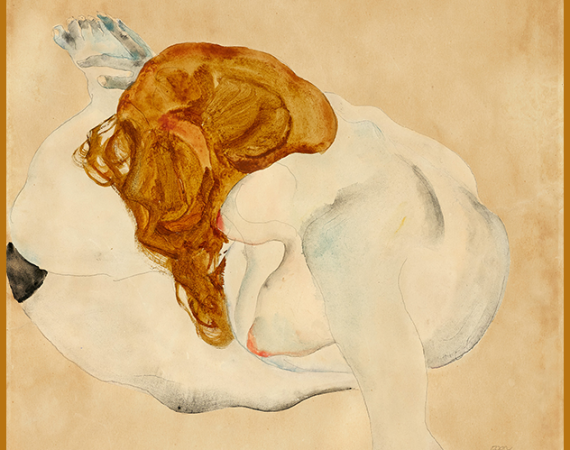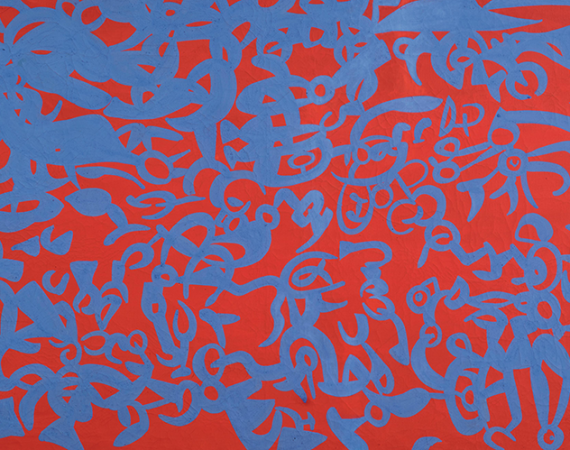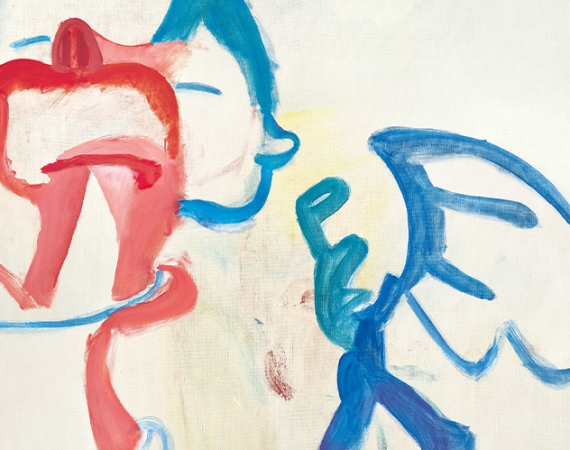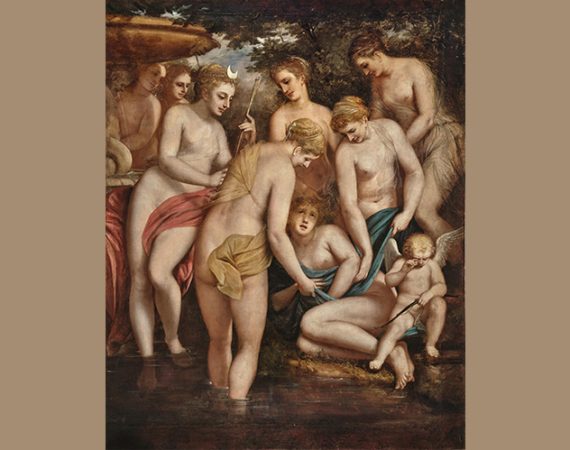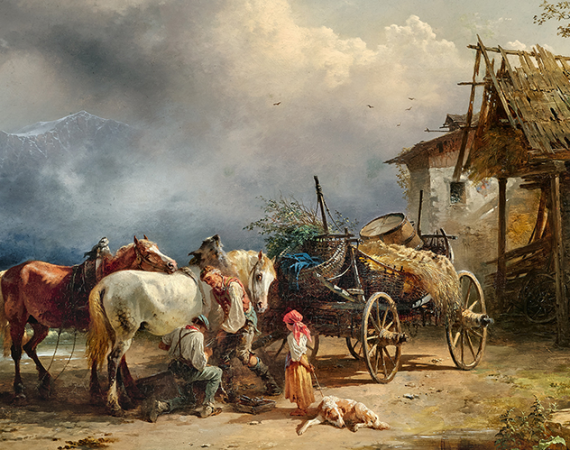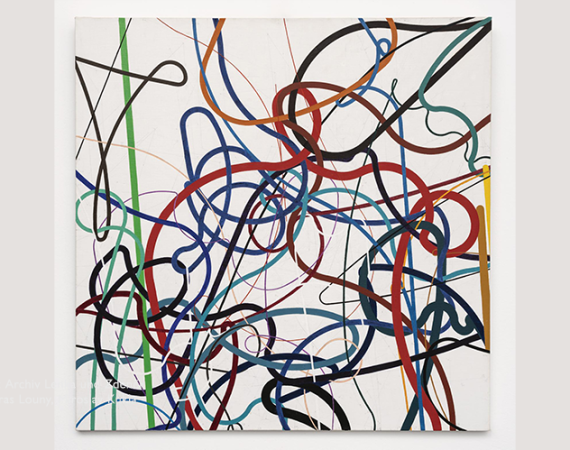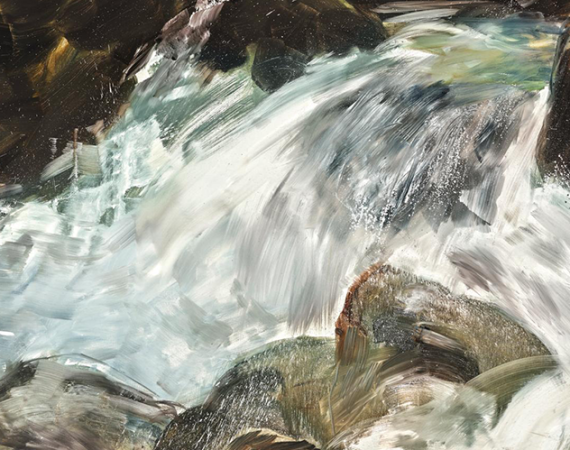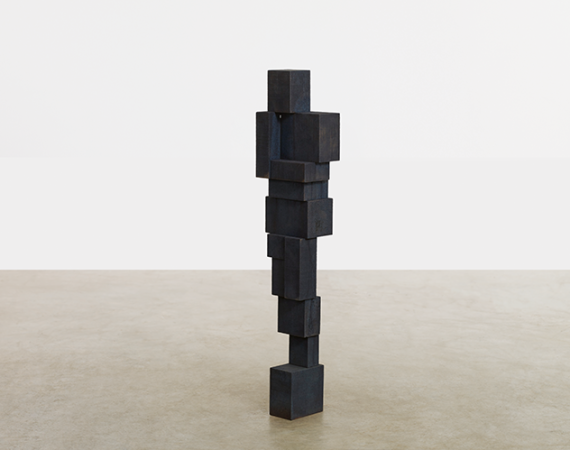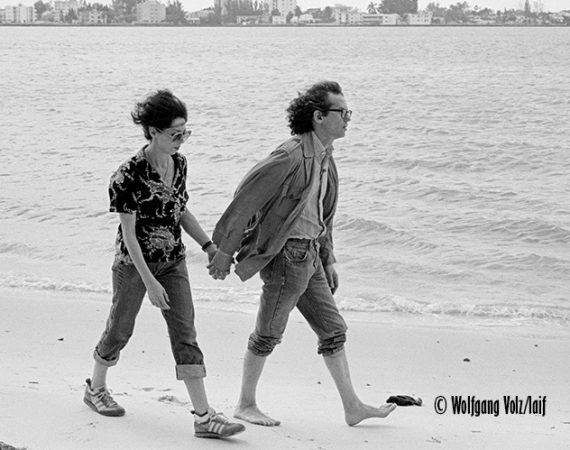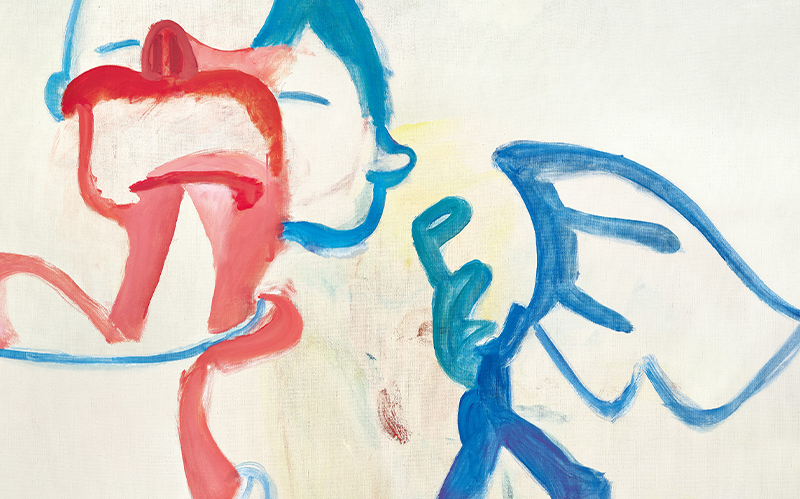
Pictures like Self-portrait with Angel/Kleiner Harlekin from 1961 represent the core of Maria Lassnig’s art: the Body Awareness Paintings. In the Strichbilder (Fine Line Pictures) from that time, she expressed the awareness of her own condition and her sense of body through painting.
“Basically, these are my most beautiful paintings”: this is how Lassnig would later speak of her Fine Line Pictures, which she created in Paris in the 1960s. They stand for a crucial period of her artistic development; to her the lines were true body art, real emotion – and not abstract at all.
This put her work in stark contrast to the fashion of a time when abstraction seemed to have replaced other art forms for good. However, it is precisely the fact that the starting point of Lassnig’s work is her own body – which gives the pictures something figurative and, in turn, unique – that makes the artist Austria’s most important female painter to this day.
Maria Lassnig moved to Paris in 1960, where the works she affectionately called Strichmanderln (little stick men) were created. In her studio in the Rue de Bagnolet, she stood in front of a white canvas on which she applied body emotions and body forms with simple lines in luminous basic colours. Self-portrait with Angel/Kleiner Harlekin contrasts cool blue with warm red. The red lines define a unique shape completing the blue one, while simultaneously standing out.
The Fine Line Pictures – true to their name – oscillate between drawing and painting; they probably hark back to Lassnig’s body awareness drawings from the late 1940’s. The artist noted: “It is easier to draw than to paint, but it is better to make a good drawing-painting than a bad painting-painting”.
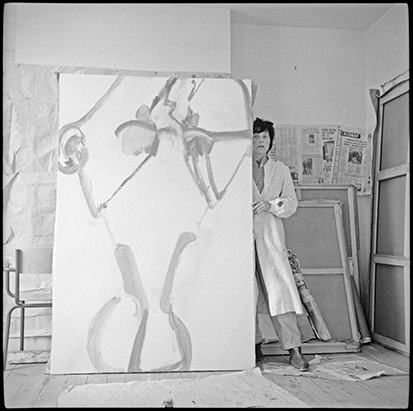
Lassnig’s decision to leave the male dominated Viennese art scene behind and establish herself internationally is easy to understand, even more so from today’s point of view. (In 1960, an art critic wrote about her show at the Gallery St. Stephan that the artist’s style of painting was very masculine in its naturalness – which was meant as a compliment.)
However, the decision to transfer to Paris might seem a less obvious choice, as the Avantgarde had already moved on to New York. The view from Vienna must have been a different one though; and for many European artists, Paris was still the place where art
happened.
In any case, the then 41-year old Lassnig happily settled into her new surroundings and the French lifestyle. To stay afloat, she wrote Art letters from Paris for Austrian newspapers, in which she vividly described the city and its art scene. Soon, she was fluent enough in French to write parts of her diary in the language.
And this is how she noted in 1962: “Non, la gloire ne serait jamais une récompense suffisante pour toutes les souffrances de ma vie.” (No, glory will never be a sufficient reward for all the sufferings of my life.) Lassnig’s glory came late; but through it all she consistently followed her very own path, as a self- and body-conscious artist.
AUCTION
Contemporary Art, 21 May 2025, 6 pm
Palais Dorotheum, Dorotheergasse 17, 1010 Vienna
20c.paintings@dorotheum.at
Tel. +43-1-515 60-358, 386

